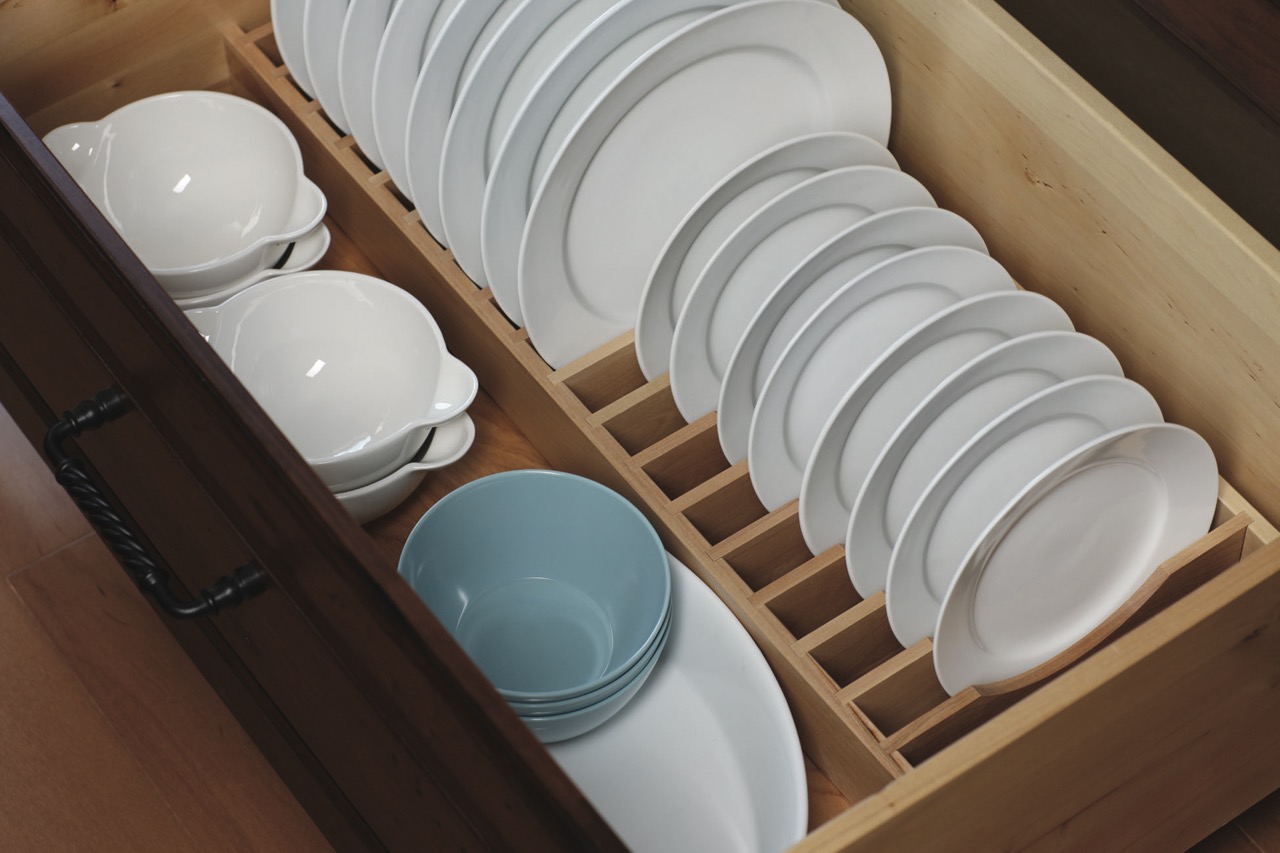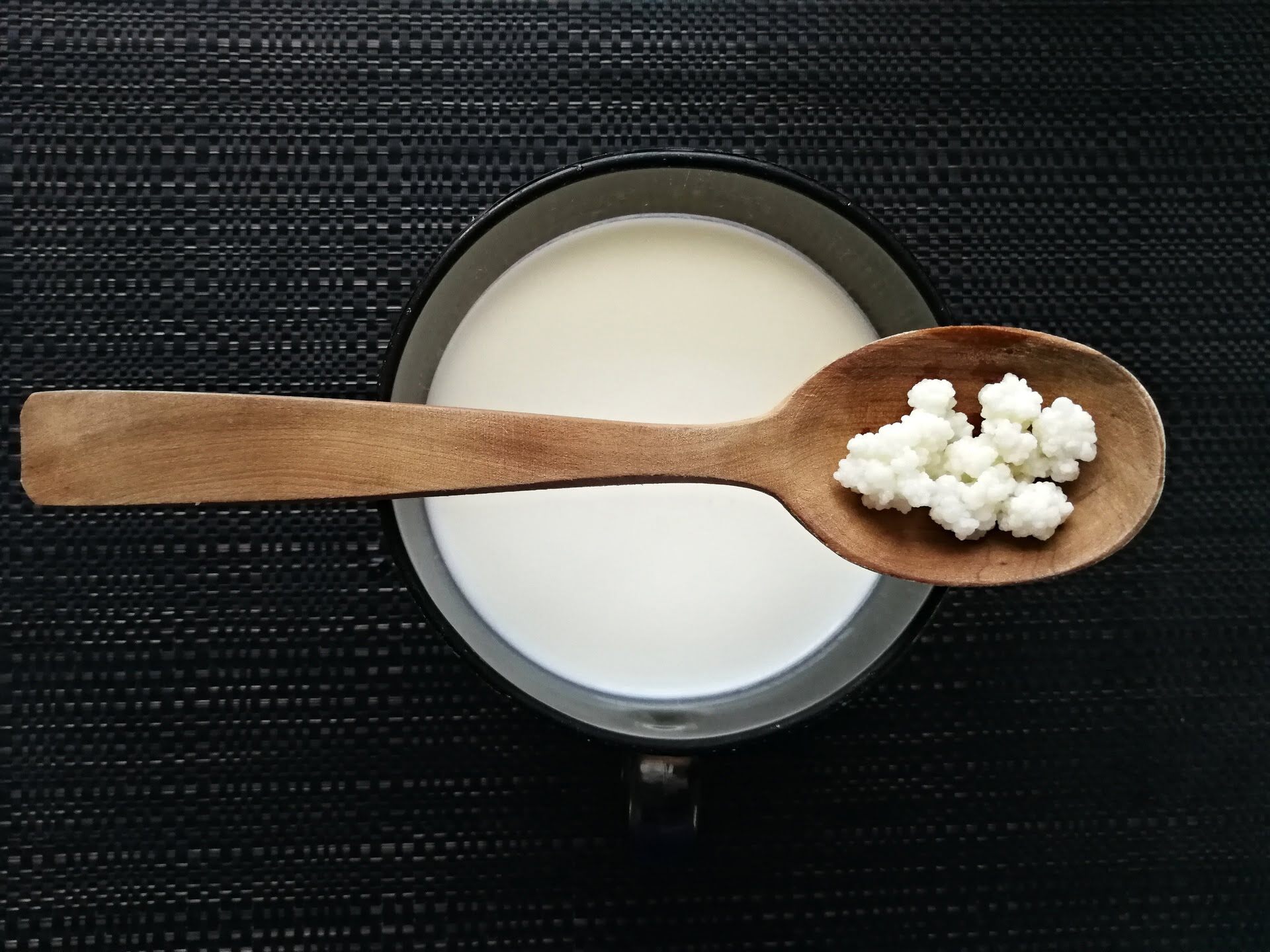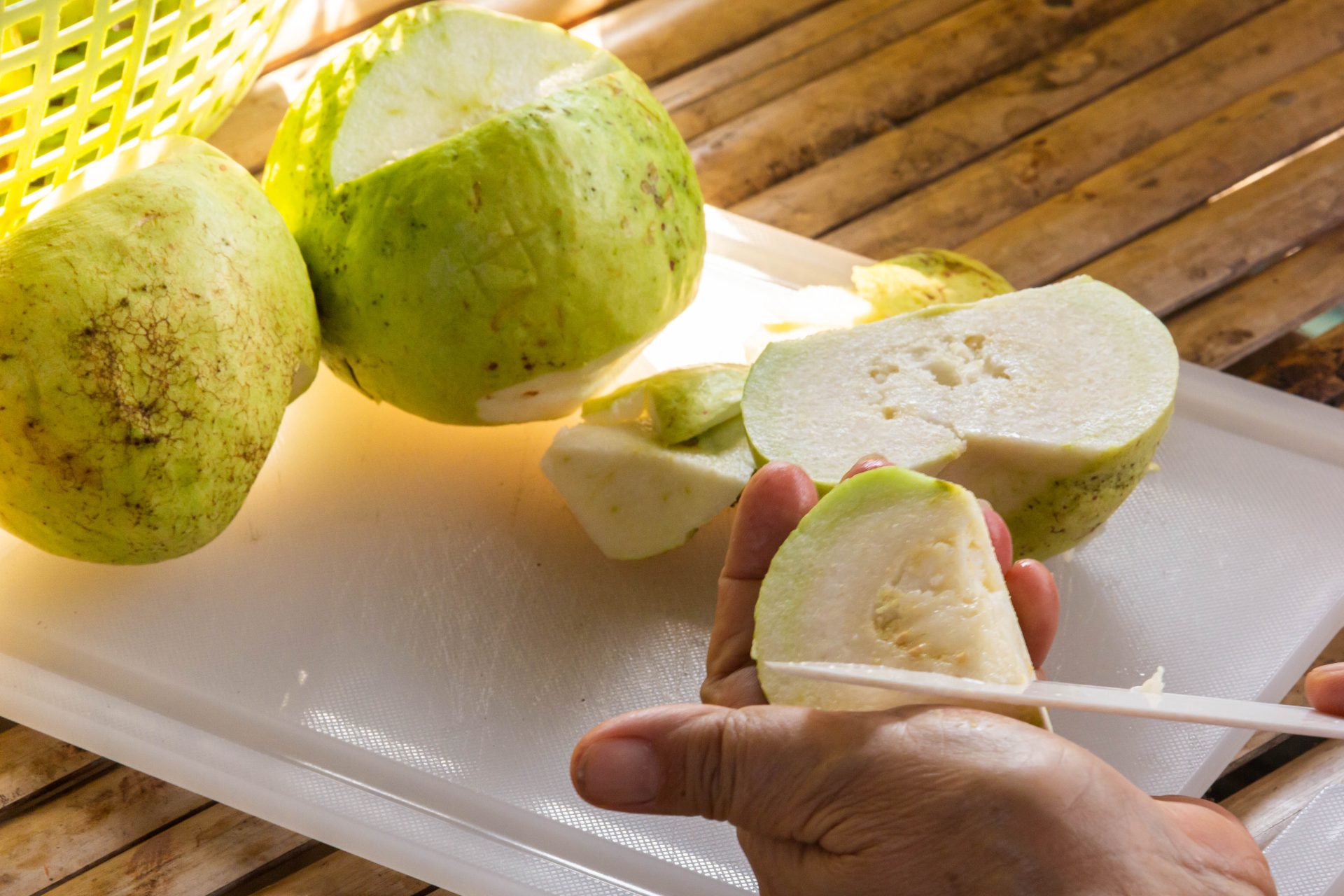

Articles
How To Store Arugula
Modified: December 7, 2023
Learn the best methods to store arugula and keep it fresh for longer with these informative articles. Discover tips and tricks to extend the shelf life and maintain the flavor of your arugula.
(Many of the links in this article redirect to a specific reviewed product. Your purchase of these products through affiliate links helps to generate commission for Storables.com, at no extra cost. Learn more)
Introduction
Arugula, also known as rocket or roquette, is a leafy green vegetable that is prized for its peppery and slightly bitter flavor. It is commonly used in salads, sandwiches, and as a topping for pizzas. If you find yourself with an abundance of arugula and want to extend its shelf life, proper storage techniques are essential.
Storing arugula correctly not only helps to maintain its freshness but also preserves its nutritional value. Arugula is rich in vitamins A, C, and K, as well as antioxidants. It is also a great source of folate, calcium, and dietary fiber. By storing arugula properly, you can ensure that it stays crisp, vibrant, and ready to be used in your favorite recipes.
In this article, we will explore the benefits of storing arugula, as well as provide tips on how to select and prepare arugula for storage. We will also discuss various storage techniques, including refrigerator storage, freezing, and preserving arugula in oil. Finally, we will highlight common mistakes to avoid when storing arugula to help you maximize its freshness and flavor.
Key Takeaways:
- Properly storing arugula extends its shelf life, saves money, and ensures a convenient supply of nutritious and versatile greens for various dishes.
- Avoiding common mistakes, such as not properly drying arugula and storing it at room temperature, is crucial for maintaining its freshness and flavor.
Read more: How To Store Arugula In Fridge
Benefits of Storing Arugula
Properly storing arugula can provide a range of benefits, both for convenience and to preserve its quality. Here are some key benefits of storing arugula:
- Extended Shelf Life: Arugula, like other leafy greens, has a relatively short shelf life. By storing it properly, you can extend its freshness and keep it usable for a longer period.
- Cost Savings: Arugula can be expensive, especially when out of season. By storing it properly, you can stock up on arugula during its peak season or when it’s on sale, saving you money.
- Convenience: Having a supply of stored arugula means you’ll always have it on hand to add a nutritious and flavorful ingredient to your meals. This can be particularly useful if you have a busy schedule or limited access to fresh produce.
- Nutritional Value: Arugula is packed with essential nutrients, including vitamins and minerals. Proper storage techniques help to preserve these nutrients, ensuring that you reap all the health benefits when consuming arugula later on.
- Versatile Ingredient: Having stored arugula allows you to incorporate it into a variety of dishes. From salads and sandwiches to pasta and smoothies, arugula adds a distinct flavor and texture that can elevate your meals.
Overall, storing arugula properly not only saves you money and time but also ensures that you have access to a nutritious and versatile ingredient whenever you need it. With these benefits in mind, let’s explore the steps to select and prepare arugula for storage.
Selecting and Preparing Arugula for Storage
When it comes to storing arugula, it’s important to start with fresh and high-quality greens. Here are some steps to follow when selecting and preparing arugula for storage:
- Choose fresh arugula: Look for arugula leaves that are crisp, vibrant, and free from wilted or yellowing spots. Avoid arugula with slimy or discolored leaves, as this indicates spoilage.
- Trim and discard damaged leaves: Before storing, inspect the arugula leaves for any damaged or bruised parts. Remove these leaves to prevent them from affecting the quality of the rest of the greens.
- Rinse gently: Place the arugula leaves in a colander and rinse them under cold running water. Gently shake off excess water or use a salad spinner to remove moisture. Pat the leaves dry with a clean towel.
- Consider blanching: Blanching is an optional step that helps to preserve the color, texture, and nutrients of arugula. To blanch arugula, bring a pot of water to a boil and add the arugula leaves for a quick blanching. Immediately transfer the blanched leaves to an ice bath to cool them down. Drain and dry the arugula thoroughly before storage.
Once you have selected and prepared the arugula, it’s time to explore the different storage techniques to keep it fresh for longer. In the next section, we will discuss proper storage techniques for arugula, including refrigerator storage, freezing, and preserving it in oil.
Proper Storage Techniques
Proper storage techniques are crucial to maintaining the freshness, flavor, and nutritional value of arugula. Here are the recommended storage methods for arugula:
- Refrigerator Storage: The refrigerator is the most common and convenient storage option for arugula. To store arugula in the refrigerator, follow these steps:
- Place the arugula leaves in a clean, airtight bag or container.
- Press out any excess air and seal the bag/container tightly.
- Store the arugula in the refrigerator’s crisper drawer or on a shelf, away from items that produce strong odors.
- Use the arugula within 3-5 days for the best quality.
- Freezing: Freezing arugula is a great option if you have a surplus amount or want to store arugula for a longer duration. Here’s how to freeze arugula:
- Blanch the arugula quickly by submerging it in boiling water for a few seconds.
- Transfer the blanched arugula immediately into an ice bath to cool it down and preserve its color.
- Drain and pat the arugula dry, removing as much moisture as possible.
- Place the arugula in airtight freezer bags or containers, removing excess air before sealing.
- Label the bags/containers with the date and store them in the freezer.
- Frozen arugula can be stored for up to 3 months.
- Thaw the frozen arugula in the refrigerator overnight before using.
- Preserving in Oil: Another option to store arugula is by preserving it in oil. Here’s the method:
- Wash the arugula leaves and dry them thoroughly.
- Coarsely chop the arugula leaves.
- Place the chopped arugula in a clean, airtight jar.
- Fill the jar with olive oil, making sure the arugula is completely submerged.
- Seal the jar tightly and store it in a cool, dark place.
- This method can retain the flavor and texture of arugula for several weeks.
- When ready to use, remove the desired amount of arugula and strain off any excess oil.
By following these proper storage techniques, you can ensure that your arugula stays fresh and remains usable for an extended period. However, there are some common mistakes to avoid when storing arugula, which we will discuss in the next section.
Refrigerator Storage Methods
The refrigerator is the most common and convenient storage option for arugula. By following the correct refrigerator storage methods, you can maintain the freshness and quality of your arugula for as long as possible. Here are a few tips to help you store arugula in the refrigerator:
- Preparation: Before storing arugula in the refrigerator, it’s important to properly prepare it. Start by washing the arugula leaves under cold running water to remove any dirt or debris. Gently pat them dry with a clean kitchen towel or use a salad spinner to remove excess moisture. It’s crucial to ensure that the arugula is completely dry, as excess moisture can cause it to spoil more quickly.
- Storage Container: Select a clean, airtight storage container or resealable plastic bag to store the arugula. The container or bag should be large enough to accommodate the arugula leaves without crushing them. Make sure the container or bag is free from any residual moisture or odor that could affect the arugula’s freshness.
- Remove Excess Air: Press out any excess air from the storage container or bag before sealing it. Excess air can cause the arugula to wilt more quickly. Removing air will help to maintain the crispness and texture of the arugula leaves for a longer period.
- Proper Placement: Place the arugula storage container or bag in the crisper drawer of your refrigerator. The crisper drawer provides a slightly higher humidity environment, which helps to keep the arugula fresh. Alternatively, you can place the container or bag on a shelf in the refrigerator. Just make sure it’s away from strong-smelling foods to avoid flavor transfer.
- Temperature: Set your refrigerator at a temperature around 32 to 40°F (0 to 4°C) to keep the arugula fresh. Avoid storing the arugula near the back of the refrigerator, as the colder temperatures near the rear can cause the leaves to freeze and spoil.
- Regular Check and Use: It’s important to check the stored arugula regularly for any signs of spoilage. If you notice any sliminess, discoloration, or off odor, discard the affected leaves. It’s best to use the stored arugula within 3 to 5 days to maintain its optimum freshness and flavor.
Following these refrigerator storage methods will help you keep your arugula fresh and ready to use whenever you need it. However, if you have an excess amount of arugula and want to store it for an even longer period, freezing is a viable option that we will discuss next.
Store arugula in a plastic bag with a paper towel to absorb moisture, then place it in the crisper drawer of the refrigerator. It should stay fresh for up to a week.
Read more: How To Store Fresh Arugula
Freezing Arugula
If you have an abundance of arugula that you want to preserve for an extended period, freezing is a suitable method. Freezing arugula helps to lock in its freshness and nutritional value. Here’s a step-by-step guide on how to freeze arugula:
- Blanching: Blanching the arugula before freezing helps to maintain its color, texture, and flavor. Start by boiling a pot of water and preparing a bowl of ice water as an ice bath.
- Preparation: Wash the arugula leaves under cold running water to remove any dirt or debris. Gently pat them dry with a clean kitchen towel or use a salad spinner to remove excess moisture. Trim any tough stems or damaged leaves.
- Blanching Process: Submerge the arugula leaves into the boiling water for approximately 15-30 seconds. Blanching time may vary depending on the size and thickness of the leaves. The goal is to quickly blanch the leaves without cooking them.
- Ice Bath: Immediately transfer the blanched arugula leaves into the ice water bath to stop the cooking process. This helps to preserve the color and texture of the leaves. Leave the arugula in the ice water bath for the same amount of time you blanched them.
- Draining and Drying: Remove the arugula leaves from the ice water bath and drain them well. Gently pat them dry or use a salad spinner to remove excess moisture. It’s essential to remove as much water as possible to prevent ice crystals from forming during freezing.
- Packaging: Divide the arugula into smaller portions or leave them in their original bunches, depending on how you plan to use them later. Place the arugula in freezer-safe bags or airtight containers. Squeeze out any excess air from the bags before sealing tightly.
- Labeling: Label the bags or containers with the date to keep track of the freezing time. This will help you use the arugula within a reasonable time frame for the best quality.
- Freezing: Place the sealed bags or containers in the freezer, making sure they are arranged flat to allow for easy stacking and space optimization. Store the arugula in the freezer for up to 3 months.
- Thawing and Using: When you’re ready to use the frozen arugula, remove the desired amount from the freezer and thaw it in the refrigerator overnight. Avoid thawing at room temperature to maintain the integrity of the leaves. Use the thawed arugula in your favorite recipes, such as soups, stews, or sautés.
Freezing arugula is a practical way to store it for an extended period. By following these steps, you can enjoy the taste and benefits of arugula even when it’s not in season. However, if freezing is not your preference, another method to preserve arugula is by preserving it in oil, which we will discuss next.
Preserving Arugula in Oil
Preserving arugula in oil is a fantastic way to extend its shelf life while keeping its flavors intact. This method not only allows you to store arugula for a longer duration but also infuses the oil with the essence of the greens. Here’s how you can preserve arugula in oil:
- Cleaning and Drying: Start by washing the arugula leaves under cold running water to remove any dirt or debris. Gently pat them dry with a clean kitchen towel or use a salad spinner to remove excess moisture. Make sure the leaves are completely dry to prevent any water from affecting the preservation process.
- Chopping: Coarsely chop the arugula leaves into smaller pieces. Alternatively, you can leave them in larger leafy sections if preferred.
- Jar Selection: Choose a clean, airtight glass jar that is suitable for food preservation. The size of the jar will depend on how much arugula you want to preserve. Make sure the jar is thoroughly cleaned and free from any residue or odor.
- Layering: Begin by adding a layer of arugula at the bottom of the jar. Press it down gently to compact it. Continue layering the arugula until the jar is filled, leaving a small space at the top.
- Oil Pouring: Pour extra virgin olive oil or any other preferred oil into the jar, ensuring that the arugula is fully submerged. Use a spoon or fork to press down the arugula while pouring to remove any air bubbles. This ensures that the leaves are completely covered by the oil.
- Sealing: Seal the jar tightly with a lid to create an airtight seal. Make sure the lid is secure to prevent any air or moisture from entering the jar.
- Storage: Store the jar in a cool, dark place to preserve the arugula in oil. The arugula will marinate in the oil, infusing its flavors over time. It can be stored for several weeks, but it’s recommended to consume it within a month for the best quality.
- Usage: To use the preserved arugula, simply remove the desired amount from the jar and strain off any excess oil. The arugula can be used in a variety of dishes, such as salads, pastas, sandwiches, or as a flavorful topping.
Preserving arugula in oil not only gives you a delicious and convenient way to store the greens but also offers a flavorful ingredient for your culinary creations. However, it’s important to note that since the arugula is stored in oil, it should be consumed within a reasonable time frame to ensure food safety. By following these steps, you can enjoy the vibrant taste of arugula throughout the year.
Now that we have explored the various storage methods for arugula, let’s discuss some common mistakes to avoid when storing arugula in order to maintain its optimal freshness and flavor.
Common Mistakes to Avoid
While storing arugula may seem straightforward, there are some common mistakes that can affect its freshness and quality. By avoiding these mistakes, you can ensure that your arugula stays crisp and flavorful for as long as possible. Here are some common mistakes to avoid when storing arugula:
- Not properly drying the arugula: Excess moisture can cause arugula to wilt and spoil more quickly. Make sure to thoroughly dry the arugula leaves before storing them to prevent moisture buildup.
- Storing arugula with moisture: Moisture accelerates the deterioration of arugula. Be sure to remove any excess moisture from the leaves before placing them in storage containers or bags.
- Not removing damaged leaves: Damaged or wilted leaves can quickly spread their deterioration to the rest of the arugula. Before storing, remove any damaged leaves to maintain the quality of the remaining greens.
- Storing arugula at room temperature: Arugula is a delicate leafy green and should be stored in the refrigerator to maintain its freshness. Storing at room temperature can cause wilting and spoilage.
- Storing arugula near ethylene-producing fruits: Certain fruits, such as apples and bananas, release ethylene gas, which can accelerate the ripening and spoilage of arugula. Keep arugula away from these fruits to maintain its freshness.
- Not using airtight containers: Arugula is sensitive to air exposure, which can cause it to wilt and lose its crispness. Ensure that the storage containers or bags are airtight to prevent air circulation and maintain freshness.
- Freezing arugula without blanching: Freezing arugula without blanching can result in a loss of texture and flavor. Blanching helps to preserve the quality of the leaves by stopping enzyme activity and preventing discoloration.
- Freezing arugula for too long: While arugula can be frozen for up to 3 months, prolonged freezing may affect the overall quality. It’s best to use the frozen arugula within a reasonable time frame to maintain its flavor and texture.
- Not labeling and dating: For proper inventory management, it’s essential to label and date the storage containers or bags. This way, you can keep track of the arugula’s storage time and easily identify it in your freezer or pantry.
By avoiding these common mistakes, you can ensure that your stored arugula stays fresh, tasty, and ready to use whenever you need it. With these tips in mind, you can confidently store arugula and enjoy its vibrant flavors and nutritional benefits.
Now, armed with the knowledge of proper storage techniques and how to avoid common mistakes, you can confidently store your arugula and enjoy its freshness and flavor for an extended period of time.
Conclusion
Knowing how to properly store arugula is essential for preserving its freshness, flavor, and nutritional value. By following the right storage techniques, you can extend the shelf life of arugula and have it readily available whenever you need it. Whether you choose to store arugula in the refrigerator, freeze it, or preserve it in oil, each method offers its own benefits and considerations.
Refrigerator storage is the most common and convenient method, allowing you to keep arugula fresh for several days. By selecting and preparing arugula properly, using airtight containers, and maintaining the right temperature, you can maximize its shelf life in the refrigerator.
Freezing arugula is ideal when you have an excess amount and want to store it for an extended period. By blanching the arugula before freezing and properly packaging it, you can maintain its texture, color, and nutritional value. Whenever you need arugula, simply thaw it in the refrigerator and use it in your favorite recipes.
Preserving arugula in oil offers a flavorful and unique storage option. By layering fresh arugula in a jar and fully submerging it in oil, you can preserve its essence and enjoy infused oil with a peppery kick. Use the preserved arugula and oil to enhance the taste of your dishes.
However, it’s crucial to avoid common mistakes such as not properly drying the arugula, storing it at room temperature, or not using airtight containers. By following these guidelines and being mindful of potential pitfalls, you can ensure that your stored arugula maintains its quality and taste for as long as possible.
In conclusion, arugula is a versatile and nutritious leafy green that can be enjoyed year-round with proper storage techniques. By selecting and preparing arugula carefully, following the appropriate storage methods, and avoiding common mistakes, you can extend the shelf life of arugula and continue to savor its vibrant flavor in your meals.
So, the next time you find yourself with an abundance of arugula, don’t let it go to waste. Store it properly, and enjoy the convenience of having this delicious and healthy ingredient at your fingertips whenever you need it.
Frequently Asked Questions about How To Store Arugula
Was this page helpful?
At Storables.com, we guarantee accurate and reliable information. Our content, validated by Expert Board Contributors, is crafted following stringent Editorial Policies. We're committed to providing you with well-researched, expert-backed insights for all your informational needs.















0 thoughts on “How To Store Arugula”